It was so cold that I didn't want to get up in the early morning. But there is no way not to get up because we must visit a renowned temple.
I took an extended tour with my friends in North Bengal this time. Our main target was to visit all the palaces, old temples, mosques, and antiquities. In my last blog, I wrote about Balihar Rajbari and shared my experience. This time I will see a Unesco world heritage site, Kantajew Temple.
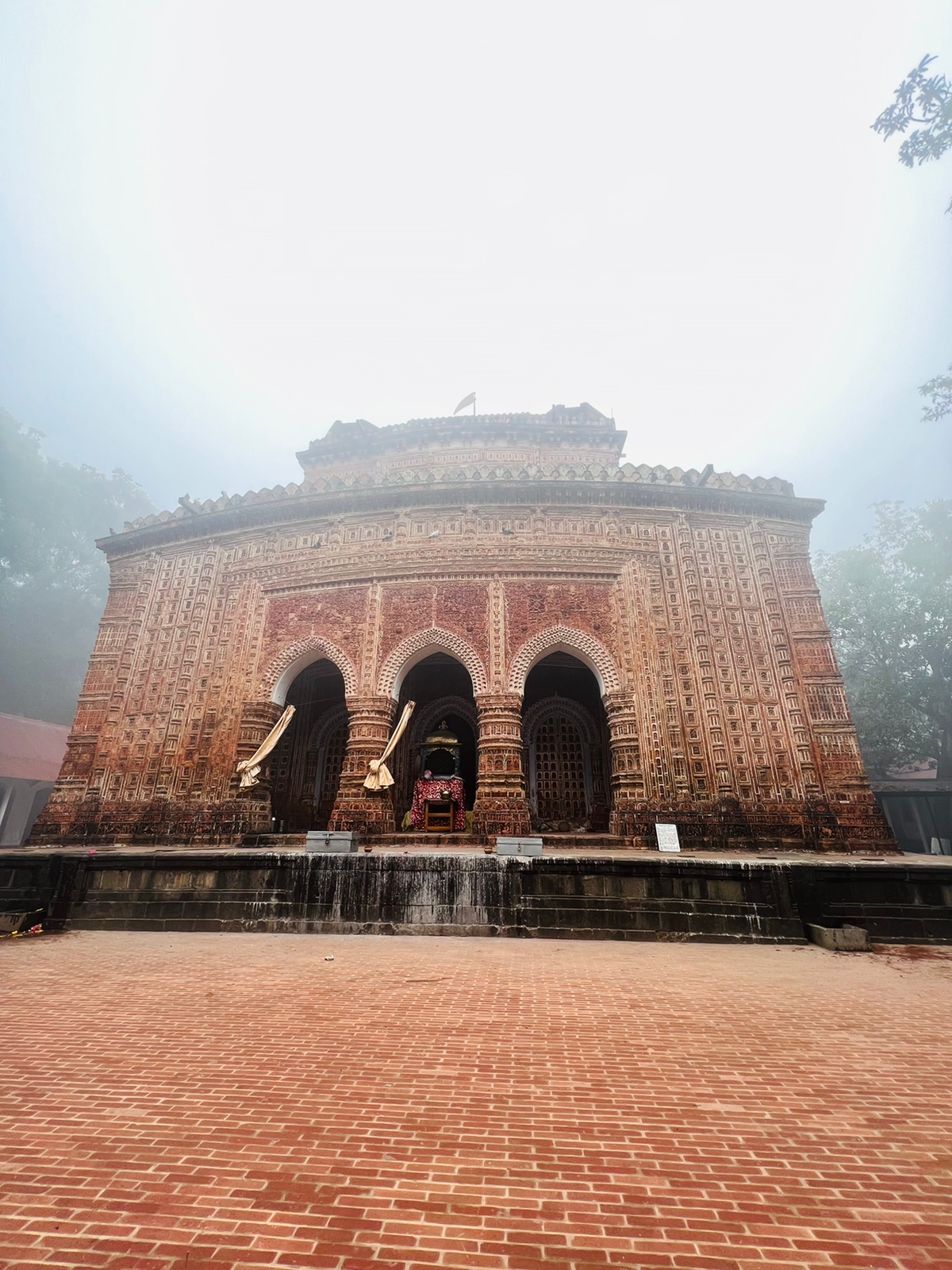
Kantajew Temple, located in the northern Bengali district of Dinajpur, is a must-see destination for any history or architecture enthusiast and, of course, all travelers. The temple, built in the 18th century by Raja Ramnath, is a fine example of terracotta architecture.
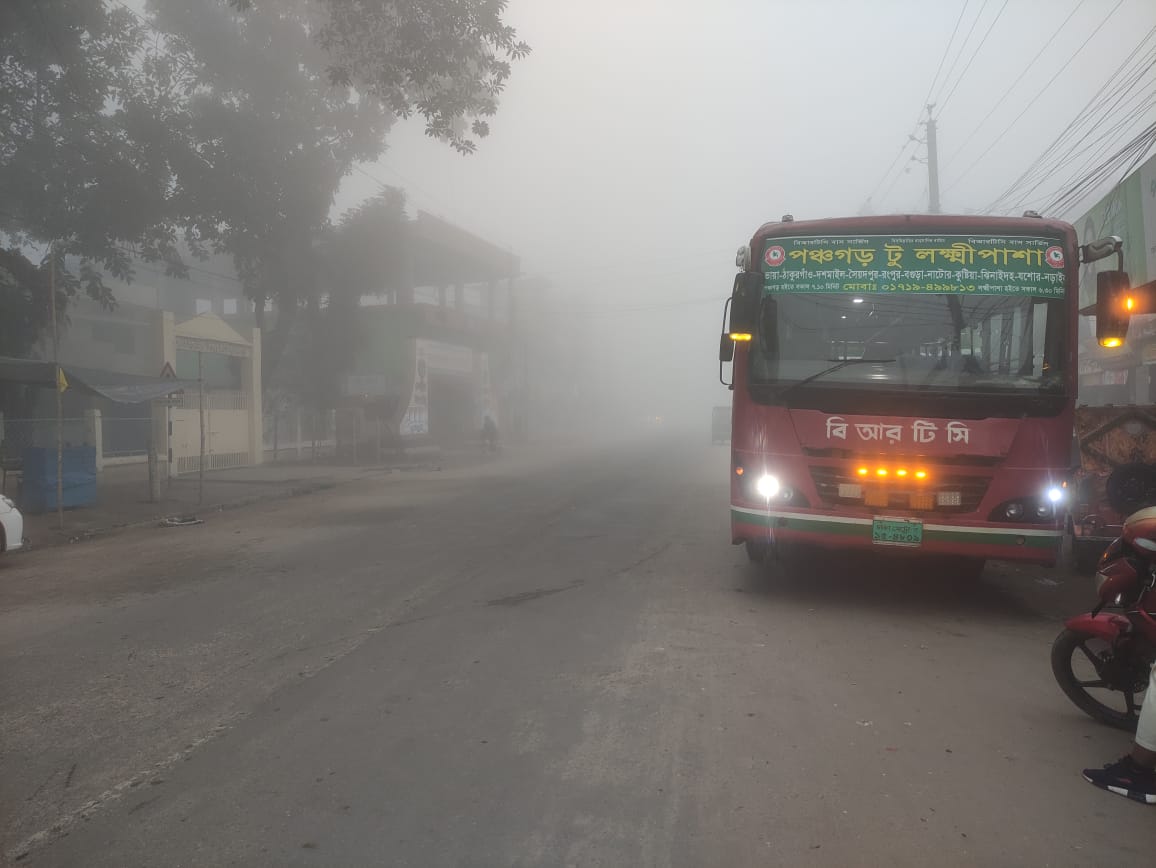
Here's our ride! Although it does not snow here in Bangladesh like in other countries, it is still freezing! If I remember correctly, the temperature was around 6 degrees celsius!
.jpeg)
North Bengal is a place full of surprises! I didn't expect to see so many statues in this part of Bangladesh! We almost arrived near the temple. These archers are showing the way!
.jpeg)

The walkway towards the temple and the whole place are covered in fog. But the places around the temple are strangely quiet. As I got closer, there started to feel a calm, pleasant feeling.
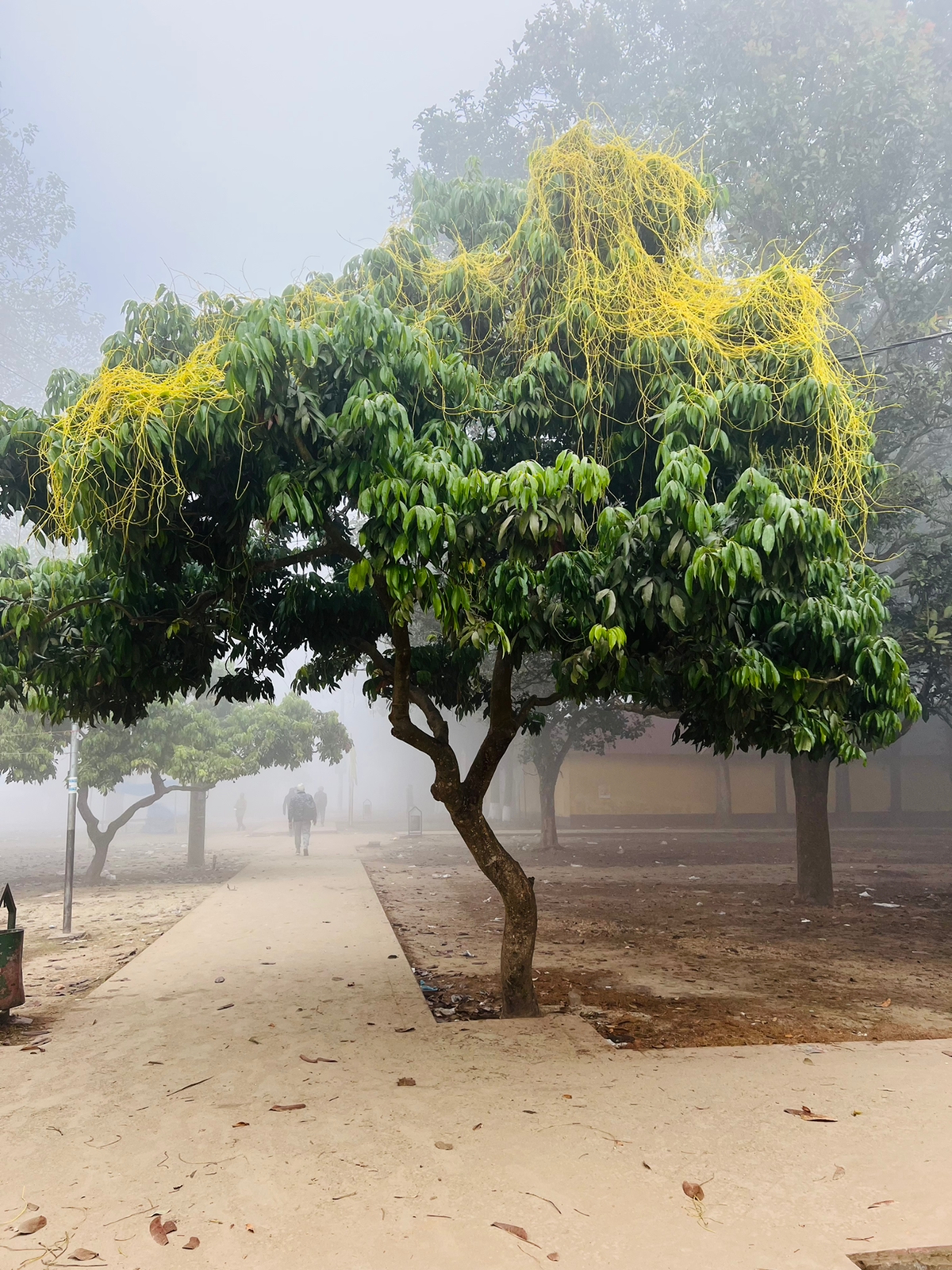
Just look at the place! The temple is surrounded by lush greenery! Calm, clean, foggy, and fewer people... seems like I can find inner peace here!
.jpeg)
And here comes the mighty temple. Isn't it beautiful! Oh, wait! You already saw the temple in the first photo. But believe me, it's worth looking at several times. I was stunned by the architecture of the temple!
.jpeg)
.jpeg)
Now look closely! The level of detail and craftsmanship on these plaques is awe-inspiring, and they highlight the temple.
The temple's most striking feature is the use of terracotta plaques to decorate the walls. These plaques depict scenes from Hindu mythology and everyday life in 18th-century Bengal.
.jpeg)
.jpeg)
Let's learn a brief history of Kantajew Temple! Raja Ramnath built this historically significant temple in the 18th century, which I already mentioned. It is dedicated to the Hindu god Vishnu, and it is a fine example of terracotta architecture.
According to historical records, Raja Ramnath was a wealthy landowner and arts patron. He commissioned the temple's construction as a tribute to his family deity, Lord Vishnu. The temple was built over several years and was completed in 1722.
.jpeg)
The temple's architecture is a blend of the Hindu and Muslim styles, which was common in Bengal during the 18th century. The temple features nine spires adorned with intricate carvings of gods, goddesses, and scenes from Hindu mythology. The temple's walls are decorated with terracotta plaques, which depict scenes from Hindu mythology and everyday life in 18th-century Bengal.
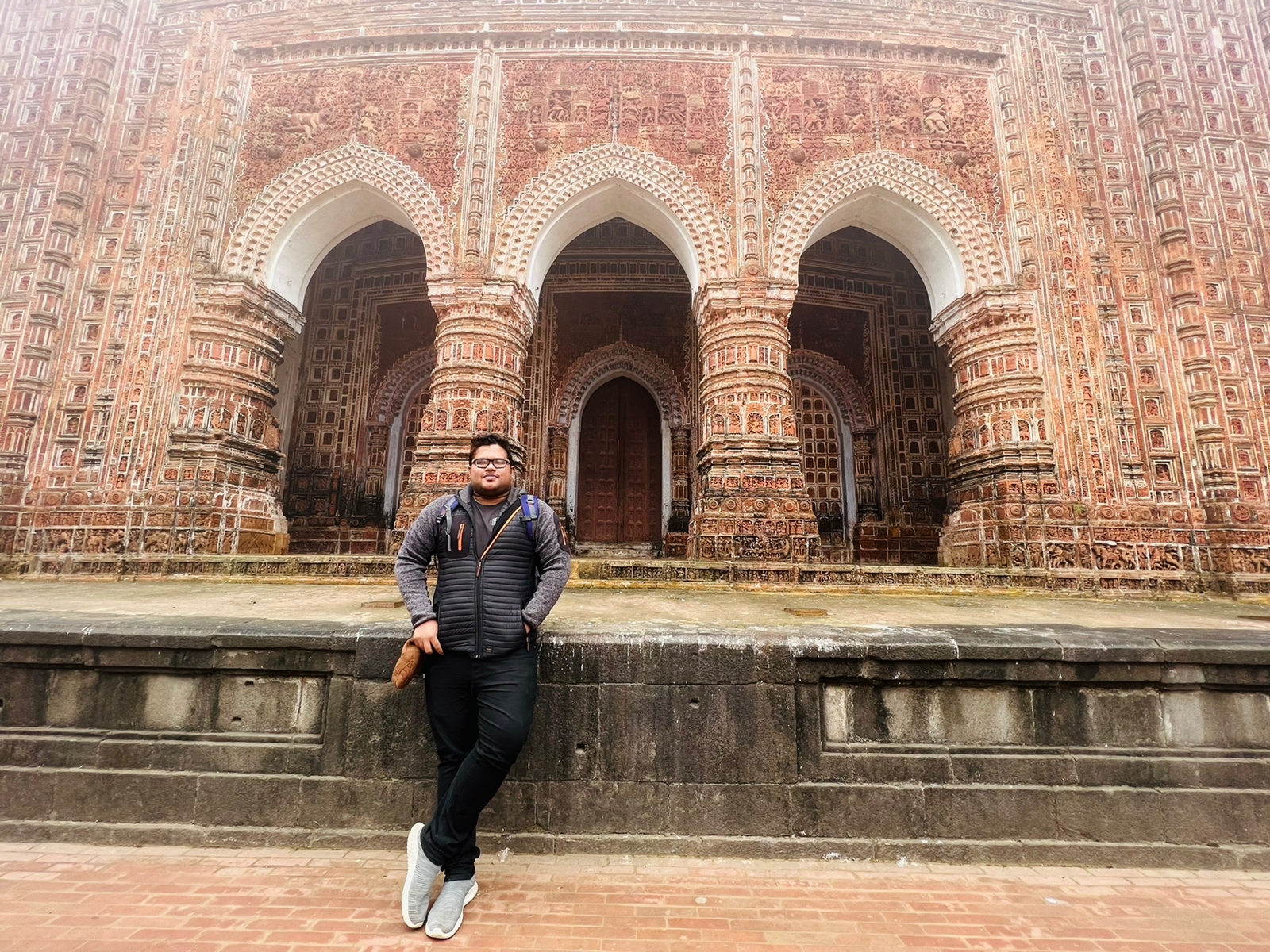
The temple has been well-maintained over the years and has been declared a UNESCO World Heritage Site. It is a popular destination for tourists and history enthusiasts alike. It is also a valuable cultural and architectural landmark that tells the story of Bengal's rich history.
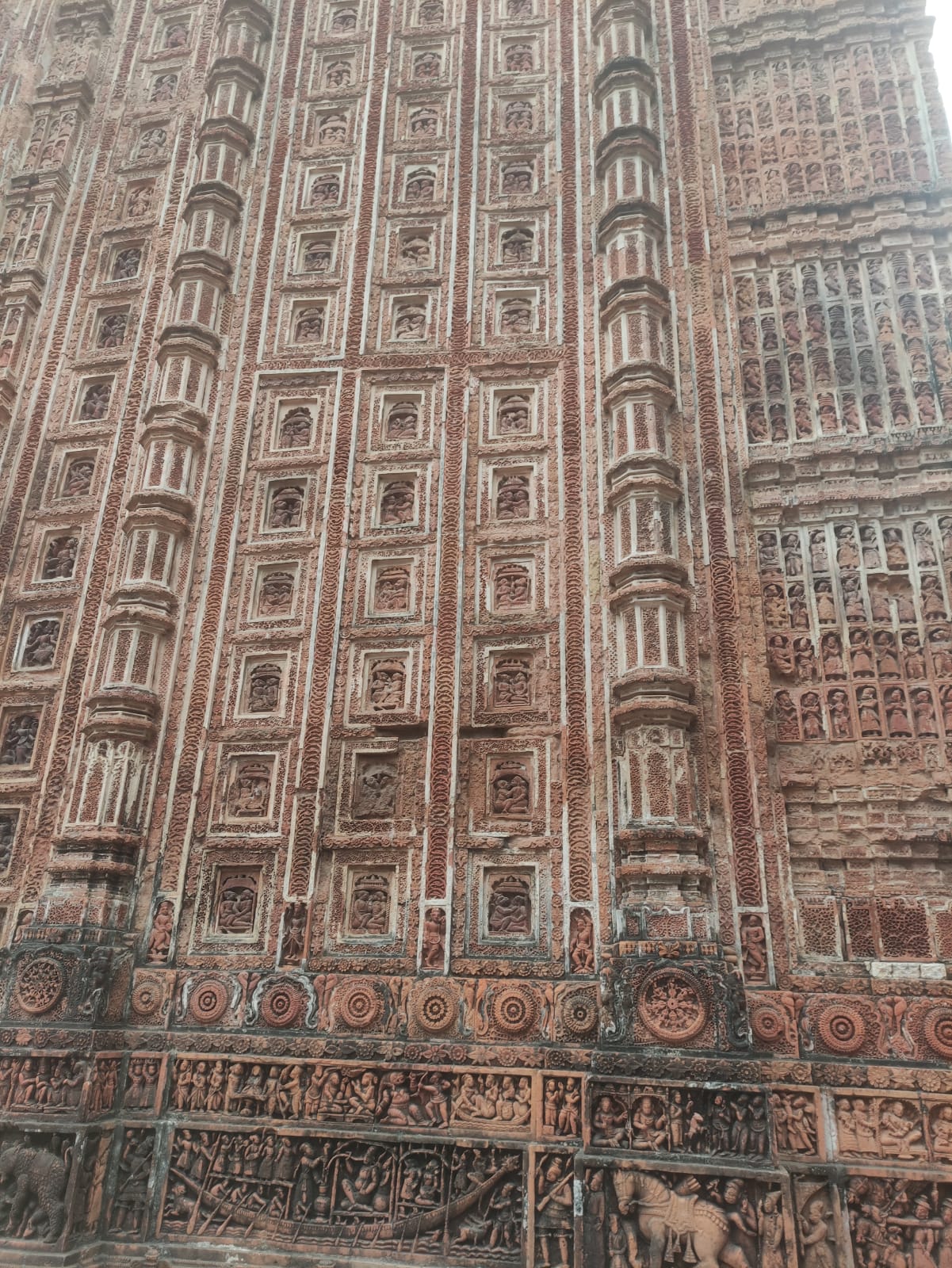
The temple has been well-maintained over the years and has been declared a UNESCO World Heritage Site. It is a popular destination for tourists and history enthusiasts alike. It is also a valuable cultural and architectural landmark that tells the story of Bengal's rich history.
The temple is well-maintained, and the temple's priests are friendly and helpful. It was a great way to spend a winter day, and I recommend visiting Kantajew Temple if you ever find yourself in Dinajpur.
Congratulations, your post has been added to Pinmapple! 🎉🥳🍍
Did you know you have your own profile map?
And every post has their own map too!
Want to have your post on the map too?
This post has been manually curated by @steemflow from Indiaunited community. Join us on our Discord Server.
Do you know that you can earn a passive income by delegating to @indiaunited. We share more than 100 % of the curation rewards with the delegators in the form of IUC tokens. HP delegators and IUC token holders also get upto 20% additional vote weight.
Here are some handy links for delegations: 100HP, 250HP, 500HP, 1000HP.
100% of the rewards from this comment goes to the curator for their manual curation efforts. Please encourage the curator @steemflow by upvoting this comment and support the community by voting the posts made by @indiaunited..
This post received an extra 7.62% vote for delegating HP / holding IUC tokens.
Hiya, @LivingUKTaiwan here, just swinging by to let you know that this post made it into our Top 3 in Daily Travel Digest #1774.
Your post has been manually curated by the @pinmapple team. If you like what we're doing, please drop by to check out all the rest of today's great posts and consider supporting other authors like yourself and us so we can keep the project going!
Become part of our travel community:
I !LUV those foggy pictures. Especially those of the beautiful temple and the tree with that yellow thing on top of it. What is it?
Lol. I have no idea too. It's probably a mango tree, but no clue what's on top of it! I asked my mom, and she said these yellow things are one kind of creeper. These are mainly seen on village trees.
Ah, that makes sense ☺️
The Kantajew temple left me speechless, I have never seen another like it.
You've attached some wonderful photos here, especially the ones where the views are visible in the mist.
Hey, thanks for stopping by. Yeah, architecturally, it's one of the most attractive temples in the country. I even can't imagine how they thought of this spectacular design in the early 18th.
You're welcome.
The people of that time I say were geniuses, to create such masterpieces is something unbelievable.
Wow, that's beautiful. Thank you for braving the cold and sharing.
Thats pretty awesome - what a place !